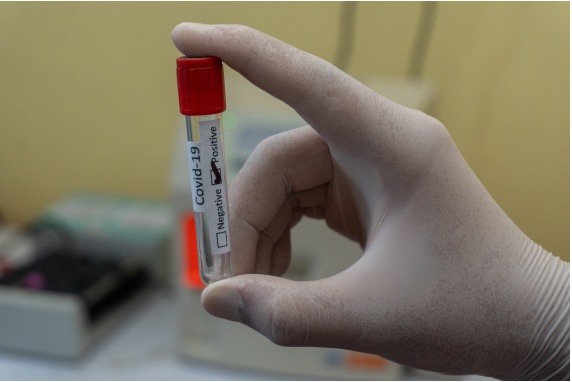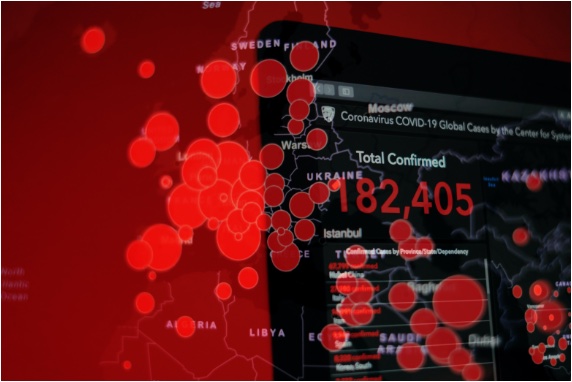When a new virus was taking hold in March 2020, capable of paralysing the world in a matter of days, millions of people obeyed the order to lock themselves in their homes, confident that it would pass in a few weeks and they would be able to safely emerge again, as if it were a long storm. But scientists were already warning that this would not be the case, and that we were in for a very long journey. Many experts were already one step ahead, asking themselves what the virus would do next. This unprecedented emergency in our recent history has put to the test everything that was known about viral evolution. Scientists are still asking the same question today. And although the massive and detailed monitoring of the evolution of this virus in real time, unprecedented in science, has vastly expanded our knowledge, a clear answer to the question still eludes us.
At first it was the Wuhan virus. SARS-CoV-2 was the second known virus of the same type as the one that caused Severe Acute Respiratory Syndrome (SARS) in Asia in 2002. Researchers have not yet been able to pinpoint where and how the new virus first jumped to humans, but the dominant hypothesis is that it originated in the immense coronavirus repertoire of bats perhaps half a century ago, and that it reached us via some as-yet-undetermined intermediate host in late 2019.
In the spring of 2020, as infection and death tolls soared in much of the world, those who survived COVID-19 were confident that at least they had beaten the pandemic and were out of danger. Governments and many public voices spoke of the possibility of achieving herd immunity, a hope fuelled by news of rapid progress on vaccines.
Mutation rate
But again, scientists warned that none of these expectations were solid, as the virus could change. Viruses mutate, especially those whose genetic material consists of RNA, as is the case with coronaviruses. Fortunately, SARS-CoV-2 has an error-correction system in its replication machinery that does not exist in other RNA viruses such as influenza, which reduces its mutation rate. The researchers initially estimated that the virus varied at a rate of only two single-letter mutations per month, about half that of influenza. Moreover, the quality or duration of immunity in recovered individuals was also unknown, as was the immunity that vaccines would provide when they became available. But the experience of influenza, which attacks us with new variants year after year with no herd immunity to contain it, suggested that we might be looking at a similar scenario.

Some scientists proposed that the first mutant forms to spread in the population would be those with improved transmissibility or infectivity. Later, once the virus had optimised its transmission and widespread immunity was already in place, the successful new variants would be those that evaded the immune response of recovered individuals. Between these two improvements—greater transmission or immune evasion—the researchers’ bets were split. Some of them also brought up the possibility of the virus losing virulence over time, a hypothesis proposed in the 19th century by bacteriologist Theobald Smith and based on the idea of a win-win balance: if host does not become seriously ill, the virus is more likely to be able to spread. The end of this process would be an endemic virus, like influenza or the four coronaviruses that cause colds.
In a nutshell, these were some of the main speculations that scientists were pondering as SARS-CoV-2 spread around the world. Two years later, it cannot be said that the predictions were completely wrong, but neither were they entirely correct. All that can be said is that the evolution of the virus has surprised the experts, and that even some of the fundamentals on which these predictions were based have turned out to be wrong.
Omicrom and reinfections
Predictions of virus mutation began to materialise in April 2020, when it was reported that a variant called D614G containing a specific mutation in the Spike (S) protein of the virus, which is responsible for recognising and infecting human cells, had already been spreading in Europe since February. This variant appeared slightly more transmissible than the original virus, which it replaced wherever it arrived, although fortunately without greater virulence. At the same time, the virus’s ability to recombine, i.e. how different forms infecting the same person could exchange genetic material to produce new variants, was beginning to be recognised.

D614G was just the beginning; from it, numerous branches, more heavily mutated variants, began to evolve. So far, five of them have been considered variants of concern (VOC) by the World Health Organisation (WHO), called Alpha, Beta, Gamma, Delta and Omicron. Beta and Gamma were in the minority, but already suggested immune evasion by escaping the action of neutralising antibodies. Alpha was explosive, 50% more transmissible, and so was Delta, which also seems to have surpassed the previous ones in virulence.
And then came Omicron. The last VOC to date has swept away all the others, except Delta, and has done so with a new twist in the plot: it too emerged independently of the others, early in the pandemic—spring 2020—with 54 mutations, 34 of them in the S protein, and was ignored for a year and a half. Omicron is even more transmissible than the previous variants, able to evade neutralising antibodies produced by infection or vaccination, and comes in several sub-variants, some recombinant with each other or with Delta. On the other hand, it has apparently proved less dangerous, infecting more easily the upper respiratory tract, but less readily lung tissue.
New rules of the game
However, while Omicron would seem to fit Smith’s hypothesis, scientists remain doubtful: for molecular epidemiologist Peter Markov and his collaborators at the European Commission’s Joint Research Centre in Ispra, Italy, “the notion that viruses will evolve to be less virulent to spare their hosts is one of the most persistent myths surrounding pathogen evolution.” “The reality is far more complex,” Andrew Rambaut at the University of Edinburgh told Nature. In Science, pathogen evolution expert Edward Holmes at the University of Sydney warned that “it’s not a simple thing”; “the evolution of virulence has proven to be quicksand for evolutionary biologists.”

Indeed, in the case of Omicron, as Kewei Ma and Jieliang Chen at Fudan University in Shanghai wrote, “the lower severity of Omicron infections seems to be the result of a combination of Omicron’s intrinsically lower virulence and pre-existing immunity, both from vaccination and past infection.” The researchers insist that at this stage, with much of the population vaccinated at different doses, infected or re-infected, it is difficult to analyse the intrinsic virulence of a variant. The same applies to cases such as the 2009 pandemic influenza or the cold coronaviruses; distinguishing a possible decrease in virulence from the acquired immunity of the population over time is enormously complicated.
What’s more, the rules of the game have changed: during the two years of the pandemic, scientists observed that the virus was mutating faster than initially estimated. Subsequent data have shown that SARS-CoV-2 has actually been evolving much faster than the cold coronaviruses and even 2.5× faster than influenza. Researchers at the University of Melbourne in Australia have found that, instead of the estimated two mutations per month, the variants have evolved in leaps and bounds, in episodes with four times the mutation rate over weeks or months: Beta emerged in just four weeks, while Delta emerged in six. According to study leader Sebastian Duchene, “it’s the virus’s ability to temporarily increase its speed which is causing the difference in pace”; “it’s like someone pumping the accelerator on a car.” Added to all this, there is concern about the possibility of variant recombination in susceptible animals, such as deer; it has not been ruled out that Omicron could have arisen in this way.
Artificial Intelligence to predict the future of the virus
But the immense volume of data collected and the availability of more sophisticated tools have led to huge advances in viral evolution models. Researchers at the Broad Institute of MIT and Harvard have developed an Artificial Intelligence system trained on more than 6 million SARS-CoV-2 genomes to try to predict what the virus will do in the future. In retrospective simulations, this tool, called PyR0, was able to predict the emergence of Alpha a month before its identification by the WHO, and also the rise of the Omicron BA.2 subvariant. According to study co-author Pardis Sabeti, this system “gives us a leg up on identifying what’s emerging and could be a potential threat.” Other new and improved models, spawned from advances in our understanding of the virus, have also been successful in their retrospective predictions of the emergence of new variants.

In short, which of the possible future scenarios the virus will choose remains unknown. At a recent meeting of the US Food and Drug Administration (FDA), experts estimated that the vast spread of Omicron suggests a quiet summer, but that the evolution of the current subvariants will be the major concern in the autumn. Should the next variant emerge from Omicron, experts say, we might expect a more benign virus; even if this variant escapes neutralising antibodies, it will not evade T-cells, another essential component of acquired immunity alongside antibodies and B-cells. More worrying, they add, would perhaps be an evolution of Delta or other more virulent variants towards greater transmissibility.
However, it is worth remembering that we are not merely innocent bystanders caught at the whim of the virus, as containment remains essential to prevent the emergence of new forms of the virus. As University of Pittsburgh epidemiologist Donald Burke emphasises in STAT, “viral evolution requires ongoing viral transmission and replication. The more new viral particles generated, the greater the chance that new viral mutants and recombinants could emerge.”
Javier Yanes
Comments on this publication